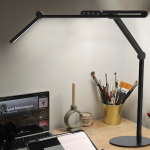Introduction
Target lighting is a vital element of effective lighting design. It refers to the technique of directing light to specific areas, objects or surfaces. This method of lighting is used to highlight the features of a space, create a focal point or draw attention to a particular object. The precision and careful placement of target lighting help to create a visually pleasing environment that not only looks good but also serves its intended purpose. In this article, we will explore target lighting and the different ways it can be used to enhance the look and function of a space.
The Importance of Target Lighting
The careful use of target lighting can drastically affect the overall appearance of a space. When used correctly, target lighting can create a pleasing visual hierarchy, guiding the eye towards the most important features of a room. This technique can be used to enhance the aesthetics of a space and create a unique ambiance. Moreover, target lighting can also help to improve the functionality of a space. For instance, by directing light onto a work surface or task area, it can improve productivity and make the area more user-friendly.
Types of Target Lighting
There are various types of target lighting that can be used in different situations. Some common types include:
- Spotlights: Spotlights are often used to highlight a particular object or feature of a room such as a piece of artwork or a sculpture.
- Wall Washers: Wall washers are used to create a balanced, soft glow over a wide area. This type of lighting is useful for illuminating an entire wall or creating a backdrop for a scene.
- Downlights: Downlights are typically installed in the ceiling and can be used to direct light downwards onto a specific area such as a dining table or a kitchen counter.
- Uplights: Uplights are designed to direct light upwards, often used to highlight architectural details or indoor plants.
Factors to Consider When Planning Target Lighting
When planning target lighting, there are several factors that need to be taken into consideration. These include:
- The purpose of the space – this will influence the type of lighting used
- The desired atmosphere or mood that needs to be created – warm or cool, bright or dim
- The size and shape of the area to be lit – this will impact the type and placement of lighting required
- The color temperature and light output of the light source – this will influence the final effect of the lighting
- The availability of natural light – this will affect the amount of artificial lighting required
Conclusion
Target lighting is a powerful tool that can be used to enhance the aesthetics and functionality of a space. By directing light to specific areas, it can create a visually pleasing environment that serves its intended purpose. When planning target lighting, it’s important to consider the purpose of the space, the desired atmosphere and mood, and the size and shape of the area to be lit. With careful planning and execution, target lighting can transform a space and create a unique ambiance that lasts long after the lights are turned off.

